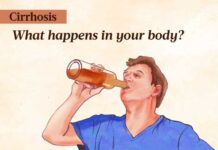Once considered mainly an adult disease, non-alcoholic fatty liver disease has taken a striking turn as a risk for children and adolescents.

A silent disease that affects one of the body’s most powerful organs is quickly gaining traction in children worldwide. Once an adult-specific condition, non-alcoholic fatty liver disease (NAFLD) is afflicting children and young adults.
NAFLD affects 10 percent of children in the general population and an estimated 36 percent of children with obesity, and is on the rise—according to an analysis conducted for the Washington Post, the rate of NAFLD has more than doubled in children up to the age of 17 since 2017. The condition has profound implications that could set children up to face cirrhosis and end-stage liver disease by the time they enter adulthood.
Due to the rise in cases in children and alcohol not being the sole contributing factor in adults, the term metabolic dysfunction-associated liver disease (MAFLD) has become the replacement moniker for NAFLD, introduced in 2020. The rate of MAFLD in children has doubled over the past 20 years and is continuing to grow, highlighting that the disease is not specific to alcohol consumption. However, the key difference between NAFLD and MAFLD is that, while the majority of children with NAFLD can also be considered cases of MAFLD, about 19 percent of children with fatty liver are of average weight and have normal fasting glucose levels, thus ruling out a metabolic diagnosis.
As the prevalence of NAFLD grows in children, so does the research. A recent study published in Clinical Nutrition in November 2023 found that children with fatty liver disease attributed to metabolic dysfunction showed significant differences in their gut microbiome compared to those without signs of liver disease, suggesting that the abundance and diversity of gut microbiota may be one contributor to fatty liver disease in children and adolescents.
Further research is needed surrounding pediatric fatty liver disease—its exact causes, diagnosis, and best course of treatment—and warrants attention from both health professionals and parents. NAFLD is projected to become the most common cause of liver transplants by 2030. For this reason, experts believe NAFLD in children is more serious than adult NAFLD, as it’s imperative to address it early on. Fortunately, with proper and timely intervention and treatment, NAFLD in children is reversible.
What Is Non-Alcoholic Fatty Liver Disease?
NAFLD is a condition of too much fat in the liver cells. Fat buildup can be due to either overconsumption of macronutrients (carbohydrates, proteins, and fats) or the liver’s inability to metabolize fats and carbohydrates. Lifestyle factors such as poor diet, sedentary behavior, and obesity are the most common contributors to this fat buildup. When excess fat leads to inflammation and scarring of the liver, it is known as non-alcoholic steatohepatitis (NASH). The stages of liver damage due to this accumulation of fat may eventually progress from NASH to cirrhosis and, ultimately, liver failure. Not all people with NAFLD will develop end-stage liver disease, but they are at a higher risk for other serious health issues such as heart disease, metabolic syndrome, and Type 2 diabetes.
Risk Factors of Non-Alcoholic Fatty Liver Disease in Children
Children with NAFLD are often asymptomatic, which poses a problem as early intervention is critical to preventing serious complications from NAFLD in children. However, there are certain signs and risk factors parents and medical professionals can keep an eye out for to help prevent the development and progression of the disease. Taking appropriate measures to identify these risk factors and detect NAFLD in children is paramount. Subsequent lifestyle changes can then be implemented to circumvent the need for a liver transplant later in life and halt the course of the disease.
There are several contributors to NAFLD in children, including a diet high in sugar and saturated fats, a sedentary lifestyle, insulin resistance, obesity, Type 2 diabetes, and a family history of the disease. An unhealthy diet, including sugary beverages and fast food, is believed to be the prominent contributing factor to NAFLD. Children consume large amounts of sweetened beverages, including fruit juices, and have a higher intake of ultra-processed foods than many adults.
The most significant identifiable risk factor in children is obesity. The later the onset of obesity in childhood, the more likely the child will have NAFLD in adulthood and its associated conditions. A National Health and Nutrition Examination Survey published in 2021 found that nearly 20 percent of children and adolescents in the United States are obese, and 16 percent are considered overweight. According to a study published in Diabetes Care in 2023, the rate of Type 2 diabetes—a comorbidity of NAFLD—in people under 20 years of age is projected to grow by close to 700 percent by 2060 in the United States.
When it comes to excess weight and obesity in children, the distribution of fat in the body is more indicative of NAFLD than the number on the scale. Children at a normal weight—but carrying excess fat in their belly—are at a higher risk of developing NAFLD.
Diagnosis and Treatment of Non-Alcoholic Fatty Liver Disease in Children
Ultimately, NAFLD is a diagnosis of exclusion. The standard first step in diagnosing NAFLD is measuring the liver enzyme alanine transaminase (ALT) through bloodwork. However, research has found that approximately 80 percent of people with NAFLD have normal ALT levels, and they rarely correlate with liver biopsy findings. Physicians only measuring ALT to identify the disease may miss significant liver damage and disease.
Another method of detection is ultrasound to gauge the degree of fat in the liver. However, children with NAFLD tend to have lower degrees of liver fat than adults, rendering the test often inaccurate for the age group. MRIs and spectroscopies have proven to be the most accurate detection in both children and adults, but there are limitations to performing the tests due to cost and availability. Although more invasive, a liver biopsy is suggested for younger children or those with a predisposition to metabolic syndrome.
There are no available medications to treat NAFLD as of yet. The gold standard for treating and managing NAFLD in children is lifestyle intervention. Weight loss has proven effective in stabilizing and reversing the disease in children. The specific type of diet recommended is still unclear, but there are known links between excess sugar consumption in the form of fructose and pediatric NAFLD.
NAFLD is not believed to reach end-stage liver disease in childhood but is seen as more of a predictor for severe consequences in adulthood. It takes approximately seven years for adults to reach each stage of the disease. There are still many unknowns surrounding NAFLD in children, however, given the rapid rise in occurrences, new treatments and methods of detection will likely emerge in years to come. For now, education and awareness surrounding the risk factors and signs in children can help mitigate serious consequences to their health.
Important Notice: This article was originally published at www.theepochtimes.com by Jennifer Sweenie where all credits are due.
Disclaimer
The watching, interacting, and participation of any kind with anything on this page does not constitute or initiate a doctor-patient relationship with Dr. Farrah™. None of the statements here have been evaluated by the Food and Drug Administration (FDA). The products of Dr. Farrah™ are not intended to diagnose, treat, cure, or prevent any disease. The information being provided should only be considered for education and entertainment purposes only. If you feel that anything you see or hear may be of value to you on this page or on any other medium of any kind associated with, showing, or quoting anything relating to Dr. Farrah™ in any way at any time, you are encouraged to and agree to consult with a licensed healthcare professional in your area to discuss it. If you feel that you’re having a healthcare emergency, seek medical attention immediately. The views expressed here are simply either the views and opinions of Dr. Farrah™ or others appearing and are protected under the first amendment.
Dr. Farrah™ is a highly experienced Licensed Medical Doctor certified in evidence-based clinical nutrition, not some enthusiast, formulator, or medium promoting the wild and unrestrained use of nutrition products for health issues without clinical experience and scientific evidence of therapeutic benefit. Dr. Farrah™ has personally and keenly studied everything she recommends, and more importantly, she’s closely observed the reactions and results in a clinical setting countless times over the course of her career involving the treatment of over 150,000 patients.
Dr. Farrah™ promotes evidence-based natural approaches to health, which means integrating her individual scientific and clinical expertise with the best available external clinical evidence from systematic research. By individual clinical expertise, I refer to the proficiency and judgment that individual clinicians acquire through clinical experience and clinical practice.
Dr. Farrah™ does not make any representation or warranties with respect to the accuracy, applicability, fitness, or completeness of any multimedia content provided. Dr. Farrah™ does not warrant the performance, effectiveness, or applicability of any sites listed, linked, or referenced to, in, or by any multimedia content.
To be clear, the multimedia content is not intended to be a substitute for professional medical advice, diagnosis, or treatment. Always seek the advice of your physician or other qualified health providers with any questions you may have regarding a medical condition. Never disregard professional medical advice or delay in seeking it because of something you have read or seen in any website, video, image, or media of any kind. Dr. Farrah™ hereby disclaims any and all liability to any party for any direct, indirect, implied, punitive, special, incidental, or other consequential damages arising directly or indirectly from any use of the content, which is provided as is, and without warranties.








